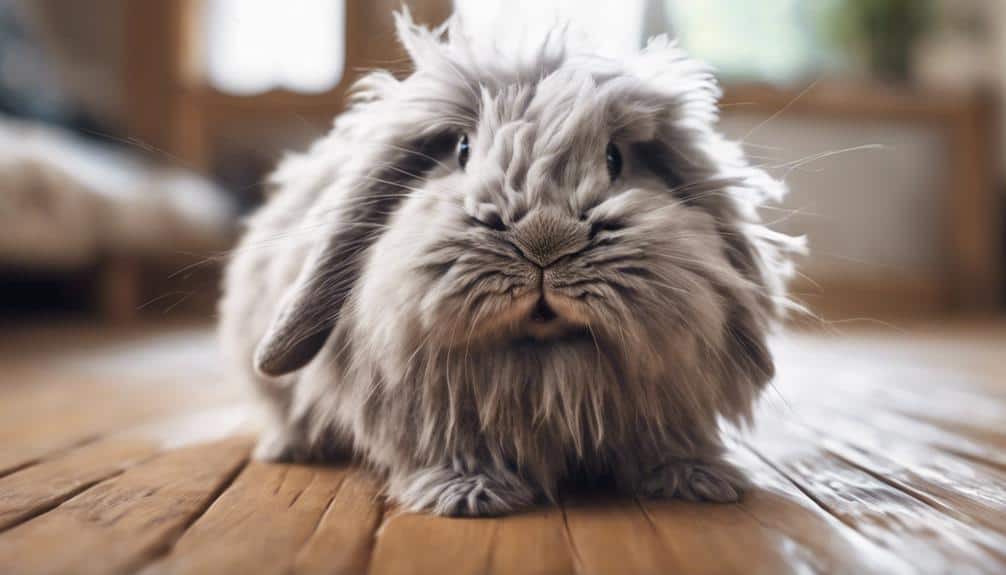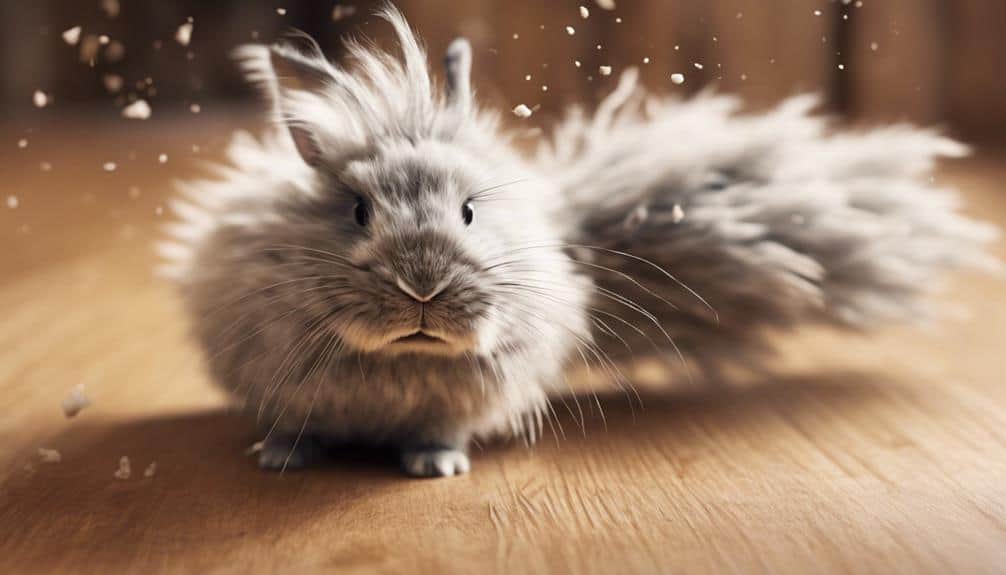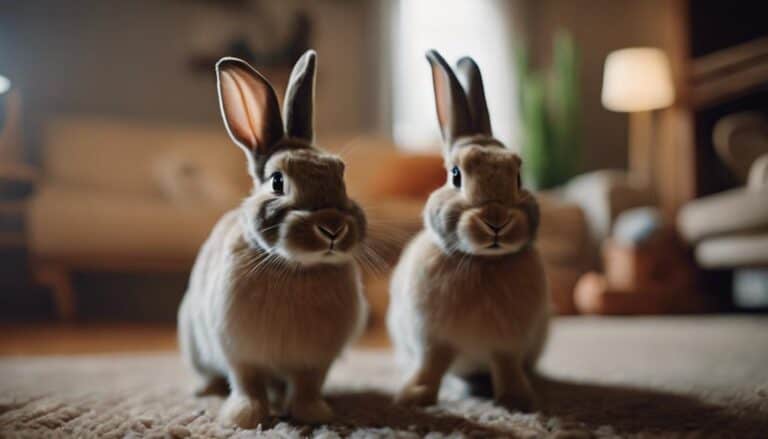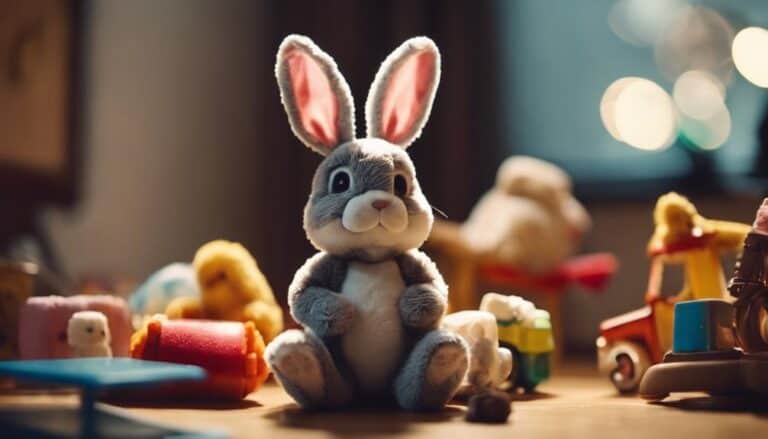Imagine coming home after a long day, only to see those elusive dust bunnies seemingly appearing out of thin air.
You might wonder, can dust bunnies move on their own? The answer may surprise you. Despite their seemingly static nature, there's more to these pesky particles than meets the eye.
Understanding the subtle ways in which dust bunnies can navigate your living space might just change the way you think about your cleaning routine.
Contents
- 1 Key Takeaways
- 2 Dust Bunnies: What Are They?
- 3 Formation of Dust Bunnies
- 4 Mechanism Behind Dust Bunny Movement
- 5 Factors Affecting Dust Bunny Mobility
- 6 Observations on Dust Bunny Behavior
- 7 Debunking Dust Bunny Myths
- 8 Do Dust Bunnies Have the Ability to Move Like Regular Bunnies?
- 9 Frequently Asked Questions
- 10 Conclusion
Key Takeaways
- Dust bunnies can move due to air currents, human activities, and vibrations.
- Static charge aids dust bunnies in traversing surfaces.
- Understanding factors like static electricity and external forces is crucial for dust bunny movement.
- Environmental factors such as airflow patterns, temperature, and humidity influence dust bunny locomotion.
Dust Bunnies: What Are They?

Dust bunnies, those pesky accumulations of dust and debris lurking in your home, are more than just harmless clumps under furniture and in corners. They're composed of dust particles, dead skin, lint, and other debris held together by static electricity and entangled fibers.
These tiny clusters may seem innocuous, but they can impact your home environment more than you realize. Dust bunnies can host dust mites and impede the effectiveness of air filters in your home. Additionally, the static electricity from buildings can attract these particles, leading to the formation of these bothersome accumulations.
It's important to stay vigilant against dust bunnies as they can obstruct air flow in your living space and even cause electronic devices to overheat due to reduced ventilation. Regular cleaning and prevention methods can help keep these nuisances at bay and maintain a healthier indoor environment for you and your loved ones.
Formation of Dust Bunnies
Amidst the stillness of your home, unseen forces propel the movement of dust bunnies across surfaces. Here are some ways in which dust bunnies form and shift within your living space:
- Air: Air currents within your home can carry dust particles, causing them to accumulate and form dust bunnies in corners or under furniture.
- Static Electricity: The build-up of static electricity on surfaces can attract dust particles, leading them to stick together and move as dust bunnies across floors and shelves.
- Human Activity: Your daily activities such as walking, cleaning, or even just sitting down can create disturbances that set dust bunnies in motion, redistributing them throughout your home.
- Furniture: Movement of furniture during cleaning or daily use can disrupt settled dust bunnies, prompting them to relocate to new areas within the room.
These factors combine to make sure that dust bunnies aren't static entities but rather dynamic accumulations that respond to various influences in your home environment.
Mechanism Behind Dust Bunny Movement

The movement of dust bunnies is influenced by various factors such as air currents, human activities, and vibrations in the environment.
Additionally, the static charge that holds dust bunnies together contributes to their ability to traverse surfaces.
Cleaning actions like vacuuming or sweeping can also displace dust bunnies, leading to their relocation within a home.
Dust Bunny Locomotion
When discussing the mechanism behind the movement of dust bunnies, it becomes evident that external forces play a crucial role in their locomotion. Here are some key points to contemplate:
- Air Currents: Air movements within a room can cause dust bunnies to shift from one place to another.
- Static Electricity: Dust bunnies can be attracted to surfaces due to static electricity, influencing their movement patterns.
- Human and Pet Activities: Activities like walking, running, or even pet movements can dislodge and transport dust bunnies.
- Vibrations: Vibrations from various sources can also lead to the movement of dust bunnies within a space.
Understanding these factors sheds light on how dust bunnies navigate and relocate in indoor environments.
Environmental Factors
Influenced by various external forces, dust bunnies in indoor environments exhibit movement patterns that are driven by factors like air currents, foot traffic, and static electricity. Airflow patterns play a vital role in determining the direction and speed of dust bunny movement within a space. Changes in temperature and humidity levels can also impact the mobility of dust bunnies, affecting their distribution throughout the environment.
Additionally, disturbances caused by physical interactions such as vibrations or sweeping motions can prompt dust bunnies to relocate. Static electricity further influences their movement by either attracting them to surfaces or repelling them from certain areas. Understanding these environmental factors is key to managing dust bunny presence and preventing their accumulation in homes.
Factors Affecting Dust Bunny Mobility
Factors influencing the mobility of dust bunnies include air currents, human or pet movements, and vibrations in the environment. When considering what affects their ability to move, think about the following:
- Static Electricity and Clumping: Dust bunnies can stick together due to static electricity, forming larger clusters that can move as a single unit.
- Composition Matters: The composition of dust bunnies, such as hair and lint, can impact how they interact with surfaces and their ability to move across different materials.
- Environmental Conditions: Factors like surface roughness, carpet texture, and humidity levels play a role in determining how easily dust bunnies can travel across a space.
- External Disturbances: Dust bunnies may be displaced and relocated when cleaning activities disturb them or when furniture is shifted, causing them to move to new areas within a home.
Understanding these factors can shed light on why and how dust bunnies move around your living spaces.
Observations on Dust Bunny Behavior

Dust bunnies exhibit passive movement in response to external stimuli such as air currents or human activity. They lack the ability to move on their own but can be easily carried around by these forces. To better understand their behavior, consider the following observations on dust bunnies:
| Behavior | Description |
|---|---|
| Static Electricity | Dust bunnies can cling to surfaces due to static electricity. |
| Skin | Skin particles contribute to the formation of dust bunnies. |
| Rid of Dust Bunnies | Regular cleaning helps to rid your space of dust bunnies. |
Observing dust bunnies can be a reminder to avoid dust accumulation in your surroundings. Despite their appearance of movement, they are simply being carried by external factors. To keep your home free of these large particles, engaging in cleaning practices that effectively capture and hold the dust is crucial.
Debunking Dust Bunny Myths
Debunking common misconceptions about dust bunnies reveals their passive nature and dispels any notions of independent movement. Here are some key points to help you understand the myths surrounding dust bunnies:
- Dust bunnies don't have the ability to move on their own: They lack mobility and rely on external factors for any displacement.
- Appearance in different locations isn't due to self-movement: Factors like air circulation, human or pet movement, or cleaning activities contribute to their presence in various spots.
- Dislodging of dust bunnies is possible: While they're static, they can be transported to other areas through human activity or air circulation.
- 'Reappearance' is a result of redistribution: Due to their lightweight nature, dust bunnies may seem to reappear in different spots as they get carried around the house.
Understanding these facts helps in debunking the misconception that dust bunnies can move independently through the house.
Do Dust Bunnies Have the Ability to Move Like Regular Bunnies?
Dust bunnies may look like little creatures, but they don’t have the ability to move like regular bunnies jumping over fences. These clumps of dust and hair just float around or get stuck in corners. Unlike real bunnies, they don’t have the agility to leap and hop.
Frequently Asked Questions
Are Dust Bunnies Living Things?
Dust bunnies are not living things. They are clumps of dust held by static electricity. They can't move on their own. You can help them relocate by air or cleaning. Understanding this helps manage them effectively.
Are Dust Bunnies Harmful?
You should be aware that dust bunnies can pose health risks due to their composition containing dust mites, bacteria, and allergens triggering respiratory issues. Regular cleaning is important to prevent asthma aggravation and allergies.
How Do Dust Bunnies Live?
In their habitats, dust bunnies live in hidden nooks, surviving on a diet of particles and fibers. Their lifespan varies, and they reproduce easily. Though unable to move alone, they travel via air currents and human actions.
Why Is My House Full of Dust Bunnies?
Your house accumulates dust bunnies due to neglecting cleaning routines. These particles thrive in areas under furniture and corners, attracted by static electricity. Prevent their buildup by regular cleaning, improving air quality, and reducing allergens in your home.
Conclusion
Now that you understand the dynamics of dust bunnies, you might be surprised to learn that these seemingly static creatures can actually move. Despite their small size, dust bunnies can be quite sneaky in finding their way around your home.
So, next time you spot one, don't underestimate their ability to travel and wreak havoc. Stay vigilant and keep those dust bunnies at bay!






